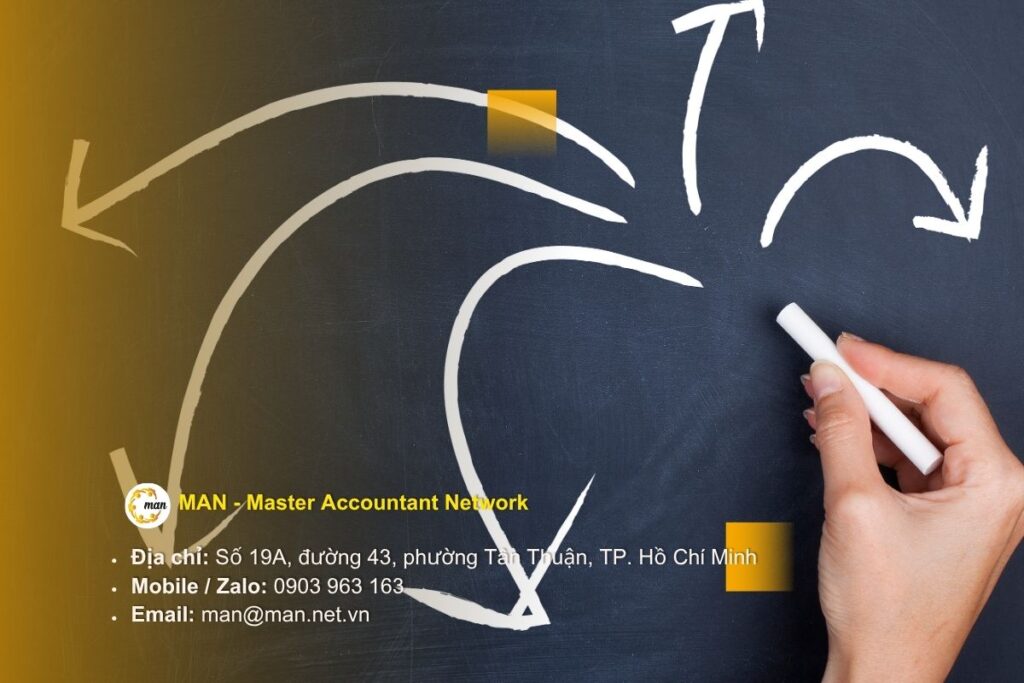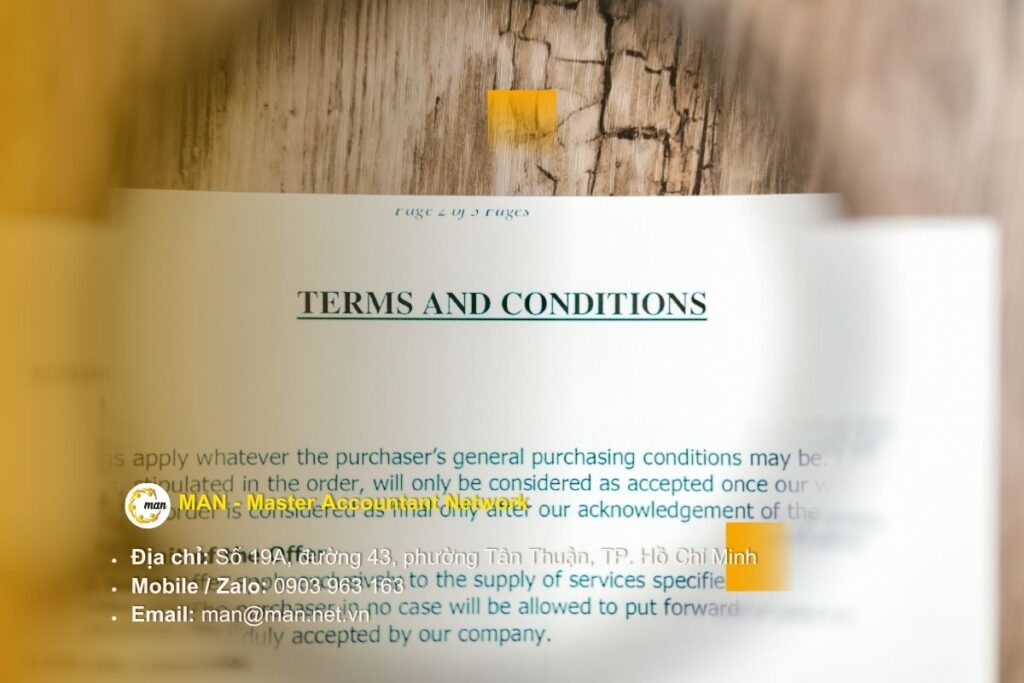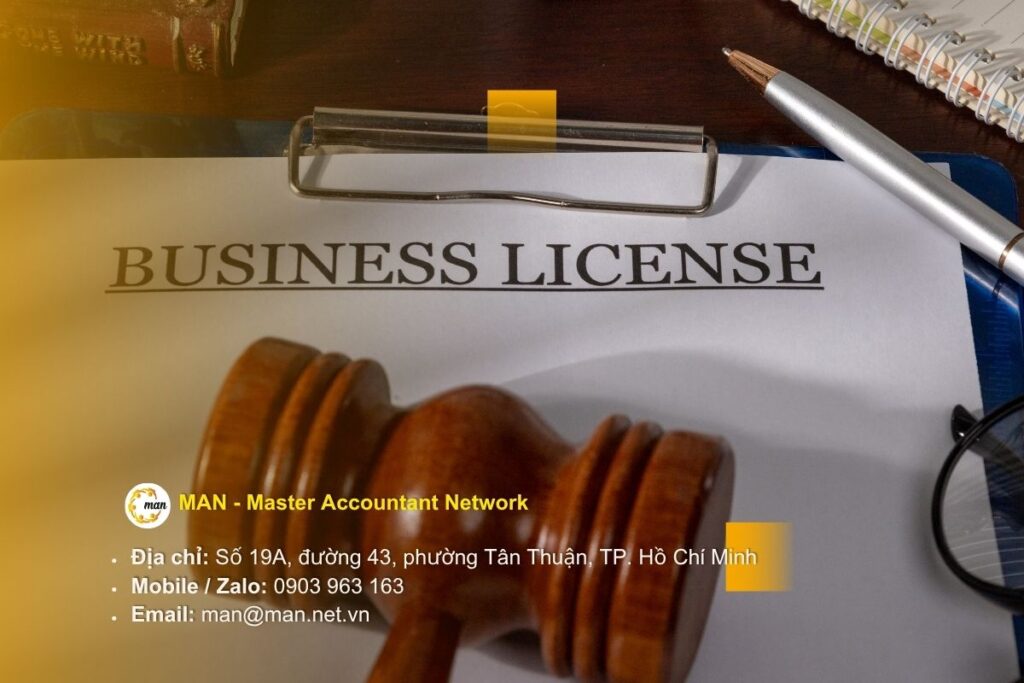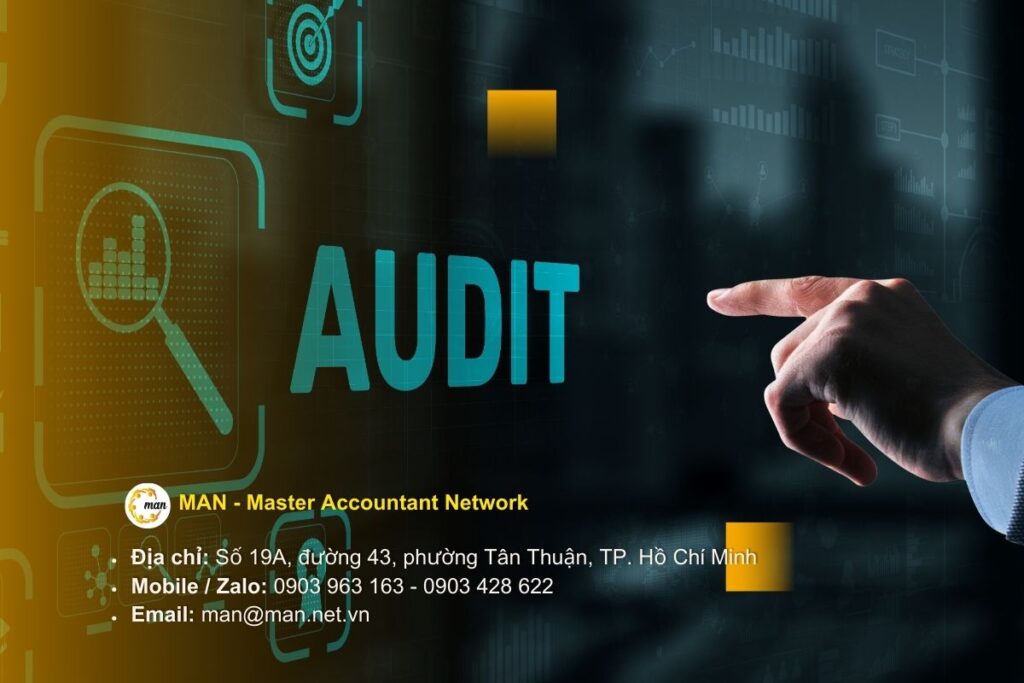Internal audit of related party transactions has become an important tool to help businesses not only comply with the law but also proactively prevent the risk of being taxed. Through reviewing, evaluating and making transparent transactions between related parties, businesses can ensure that the transaction value is consistent with the principle of independent market prices, while enhancing prestige and trust with management agencies as well as investors. This is a strategic step for businesses to develop sustainably in the current globalized and fiercely competitive business environment.
What is internal audit of related party transactions?
Internal audit affiliate transactions is the process of independently and objectively reviewing and evaluating all activities related to transactions between related parties in an enterprise. Not only stopping at checking the accuracy of accounting data, internal audit also focuses on analyzing compliance with the Arm's Length Principle, the reasonableness of transfer pricing policies and the ability to meet legal requirements according to Decree 132/2020/ND-CP as well as OECD guidelines.
Implementing internal audits of related-party transactions helps businesses proactively detect potential risks, identify errors in transaction price documents and promptly take corrective measures before being inspected or audited. At the same time, this activity also plays an important role in strengthening transparency, improving financial management efficiency and affirming credibility with management agencies, partners and investors.
The role of internal audit of related party transactions
To clearly see the role and practical value, join MAN - Master Accountant Network to learn in detail the outstanding benefits that internal audit of related-party transactions brings to businesses:
Ensuring effective tax compliance and administration
- Internal audit of related-party transactions helps businesses independently review and evaluate the reasonableness of related-party transactions.
- Check for compliance with the Arm's Length Principle and compare with market data.
- Limit the risk of being assessed, collected or penalized by tax authorities due to violations in transfer pricing policies.
Detecting and handling risks in internal management
- Help management identify early risks in transfer pricing, associated service costs, intangible assets and profit allocation.
- Provide a basis for adjusting accounting policies, transaction structures and supporting documentation.
- Support to optimize tax costs while still ensuring compliance with the law.
Meet international standards and practices
- Many countries strictly apply the recommendations in the OECD's BEPS Action Plan to combat tax base erosion.
- Internal audit of related-party transactions helps businesses comply with Decree 132/2020/ND-CP in Vietnam and is consistent with OECD standards.
- Increase transparency, strengthen reputation with tax authorities, investors and global partners.
- Create favorable conditions for businesses to expand international markets.
Internal audit of related party transactions is not only a compliance tool, but also a strategy for risk management and sustainable development in the era of global tax transparency.
Distinguishing internal audit of related transactions from independent audit and tax inspection
Many businesses often confuse internal audit of related party transactions, independent audit and tax audit. In fact, these three activities have different objectives and scope. The table below will help you clearly distinguish to avoid missing out on important benefits from each form.
Board: Distinguish between internal audit of related party transactions, independent audit and tax inspection.
| Criteria | Internal audit of related party transactions | Independent audit | Tax inspector |
| Main objective | Review and evaluate related-party transactions to ensure compliance with the principle of independent market prices and Decree 132/2020/ND-CP | Give an independent opinion on the truthfulness and reasonableness of the enterprise's financial statements. | Check, determine tax obligations, detect violations and handle violations of tax laws. |
| Implementing entity | The internal audit department of the enterprise, operates independently within the company. | Independent auditing company, licensed to practice in accordance with the law. | State tax agencies (General Department of Taxation, Tax Department, Tax Branch). |
| Scope of work | Check related transactions: internal prices, pricing records, related service costs, intangible assets… | All financial statements comply with accounting and auditing standards. | Tax declaration and payment activities, transfer pricing policies, corporate income tax obligations, VAT and other taxes. |
| Reporting nature | Internal reports serve management and prevent tax assessment risks due to related-party transactions. | Independent audit reports are publicly released to serve investors, shareholders, and regulators. | Minutes of inspection/check, decision to collect or impose administrative penalty if there is a violation. |
| Value | Help businesses proactively prevent tax risks, optimize costs, increase transparency and reputation. | Create trust for investors, partners, shareholders and regulators. | Accurately determine tax obligations and handle violations to protect the State budget. |
From the comparison table, it can be seen that internal audit of related-party transactions plays a special role in the control system of enterprises. Unlike independent audits and tax inspections, this activity does not aim to give public opinions or handle violations, but focuses on proactively preventing risks, ensuring compliance and optimizing tax management right from within the enterprise.
Legal framework and relevant standards
Below is a detailed, clear and practical explanation of Decree 132/2020/ND-CP, OECD standards on document requirements, corporate responsibilities and all to serve the purpose of internal control. Especially internal audit of related-party transactions.
Decree 132/2020/ND-CP regulating related-party transactions

So, what are the most important provisions of Decree 132/2020/ND-CP regarding internal audit of related-party transactions? Below are the key points that businesses should note:
- Scope and objectives: Decree 132/2020/ND-CP stipulates the principles, methods and procedures for determining the factors forming the price of related-party transactions, the rights and obligations of taxpayers and the management authority of tax authorities over enterprises with related-party transactions. (See details: Decree 132/2020/ND-CP on related-party transactions)
- Application of the Arm's Length Principle and transfer pricing methods: The Decree requires the application of the Arm's Length Principle and allows the use of comparison methods (such as CUP, RPM, CPM, TNMM PSM) depending on the nature and functions of the parties.
- Appendices and declaration forms or dossiers: The Decree includes appendices regulating information on related-party transactions, contents of national dossiers (Local File), global dossiers (Master File) and national profit margin reports (CbCR). See details: Here
OECD important international standards

OECD has also provided important guidelines for businesses to easily apply in practice. They can be summarized in the following three points:
- The arm's length principle is the international foundation. The OECD Guidelines are the international reference for applying the arm's length principle, emphasizing the analysis of function, risk and contract conditions to select the appropriate comparison method.
- Importance of like-for-like comparison: OECD provides detailed guidance on the selection of comparables, adjustment for differences and the use of market information, or data, to protect the reasonableness of internal prices.
- The OECD recommends that documentation should be sufficient to enable tax authorities to understand the comparison method and basis of comparison, the objective of reducing disputes and the ability to defend against audits.
Time of creation, storage and provision
During the internal audit of related party transactions, the following three document requirements are the most important to comply with legal regulations:
- The dossier must be prepared before the annual corporate income tax declaration and kept for presentation when requested by the tax authority.
- When requested by the tax authority, the time limit for providing documents is usually between 15 and 30 working days; in some cases, it can be extended according to regulations. (Enterprises need to prepare in advance to avoid being assigned due to late provision).
- Regarding retention periods, professional practice and guidance often recommends keeping records for a minimum period as prescribed by the Accounting Act (e.g., refer to 10 years for some accounting documents or related records), however businesses should check the specific current regulations and guidance of the tax authorities.
After analyzing the legal framework and the time of filing the documents. Next, join MAN - Master Accountant Network to learn about the internal audit process of related-party transactions. This is the foundation for businesses to systematically implement control, from data preparation, audit implementation to reporting and adjustment recommendations.
Internal audit process of related party transactions
Businesses need to understand each step in the internal audit process of related-party transactions. The table below will outline in detail the important steps, from planning to monitoring improvements, helping businesses proactively control risks and increase transparency.

Board: Internal audit process of related party transactions.
| Step | Implementation content | Implications for internal audit of related party transactions |
| Audit planning | Determine the scope of the audit, the related-party transactions to be considered, the audit period and the resources involved. | Helps businesses proactively control all linkage activities, ensuring that no risky transactions are missed. |
| Data collection and analysis | Compile contracts, financial statements, filings, benchmarking and market data. | Provide a basis for comparison between transaction reality and legal standards, especially according to Decree 132/2020/ND-CP and OECD. |
| Risk assessment | Review internal prices, valuation of intangible assets, associated service costs, internal loans. | Detect irregularities that may lead to tax assessments and propose preventive measures. |
| Perform detailed testing | Compare with independent market price (ALP) principle, function-asset-risk (FAR) analysis, compare with independent data. | Ensure objective audit results, increase transparency in related party transaction management. |
| Report and recommendations | Synthesize audit results, provide comments, propose adjustments to transfer pricing policies or supplement supporting documents. | Help businesses improve internal control systems, minimize collection and penalty risks. |
| Monitor and improve | Monitor implementation of recommendations, update policies according to changes in laws and markets. | Create sustainability, helping internal audit of related-party transactions become a long-term preventive tool. |
Establishing and fully complying with the internal audit process of related-party transactions not only helps businesses meet legal requirements but also creates a sustainable tax management foundation. Through the audit process, many potential problems can be detected early, such as unreasonable valuation, incomplete records or unfounded transactions. These are the risks detected through internal audit of related-party transactions that businesses need to pay special attention to in order to have timely solutions to avoid being assessed and collected by tax authorities.
Risks and solutions from internal audit of related party transactions
To help businesses better visualize common problems, below is a summary table of common risks detected through internal audits of related-party transactions. This table not only indicates the nature of each risk but also shows the direct impact on the business and appropriate solutions, thereby emphasizing the key role of internal audits of related-party transactions in protecting compliance and optimizing taxes.
Board: Summary of risks and solutions to overcome internal audit of related party transactions
| Risk | Detailed description | Impact | Solution |
| Transaction pricing not based on independent market price principles | Internal selling and buying prices do not reflect independent market prices. | Risk of being assessed, collected and fined by tax authorities. | Review valuation methods, compare with independent comparable data, and make timely adjustments. |
| Unfounded linking service charges | Management fees, royalties, service fees with no evidence of actual benefit. | Excluded expenses when settling, increasing tax obligations | Requires documentation to prove economic benefits; evaluates service contracts. |
| Improper allocation of costs or assets | Profits or costs are allocated not based on actual economic value. | Causes unusual fluctuations in profits, potentially leading to inspection risks. | Review allocation methods and build a transparency mechanism according to OECD standards. |
| Incomplete supporting documents | Local File, Master File, CbCR not established in time or missing important information. | The tax authority has the right to assess tax for failure to meet the burden of proof. | Check the progress of the dossier preparation, ensure to save it before the tax settlement date, ready to provide in 15-30 days. |
| Intangible assets and technology transfer | Unpriced or unreasonably priced trademarks, patents, and technological know-how. | Tax authorities consider it as transfer pricing and are required to adjust taxable income upwards. | Re-audit all contracts, apply intangible asset valuation method according to OECD guidelines. |
| Internal financial transactions | Loans – internal loans at non-market interest rates, without strict contracts. | Interest expense may be deducted or income adjusted upwards. | Compare with independent interest rates, review thin capital ratio according to regulations |
From the table above, it can be seen that internal audit of related-party transactions not only helps businesses promptly identify risks in pricing, costs or supporting documents, but also plays a key role in building a transparent and internationally compliant control mechanism. This is an important foundation for businesses to avoid tax imposition and optimize financial obligations.
Conclude
Internal audit of related-party transactions is the key to help businesses comply with the law, avoid tax imposition and improve financial transparency. To optimize resources and minimize risks. Accompany MAN - Master Accountant Network with a team of experienced experts in the fields of tax, auditing, and finance. Contact MAN - Master Accountant Network now for in-depth advice and to build an effective internal audit system for your business.
Contact information MAN – Master Accountant Network
- Address: No. 19A, Street 43, Tan Thuan Ward, Ho Chi Minh City
- Mobile / Zalo: 0903 963 163 – 0903 428 622
- E-mail: man@man.net.vn
Editorial Board: MAN – Master Accountant Network




